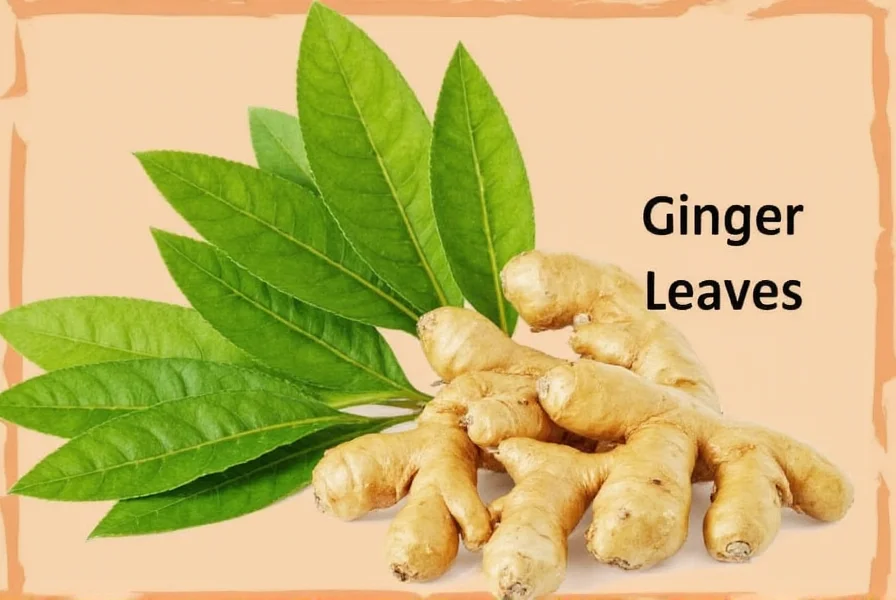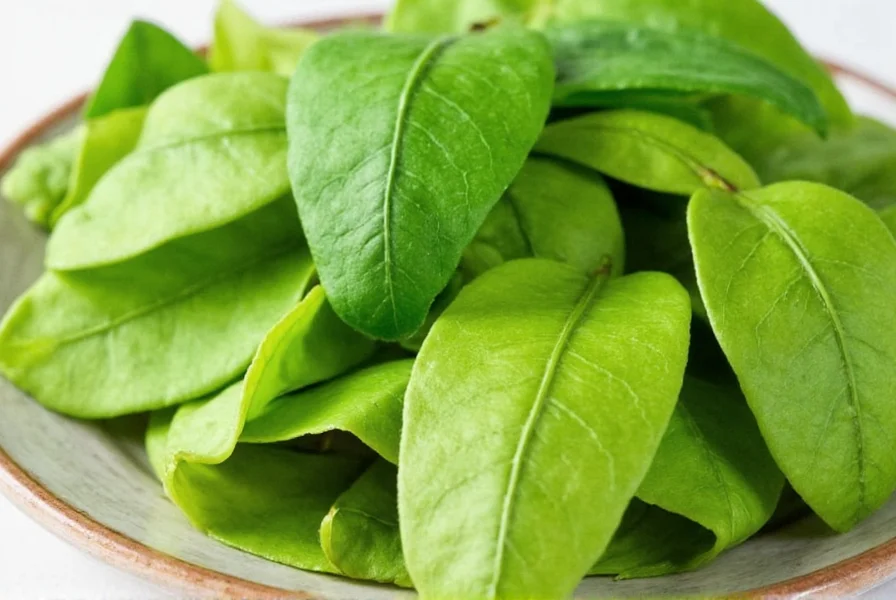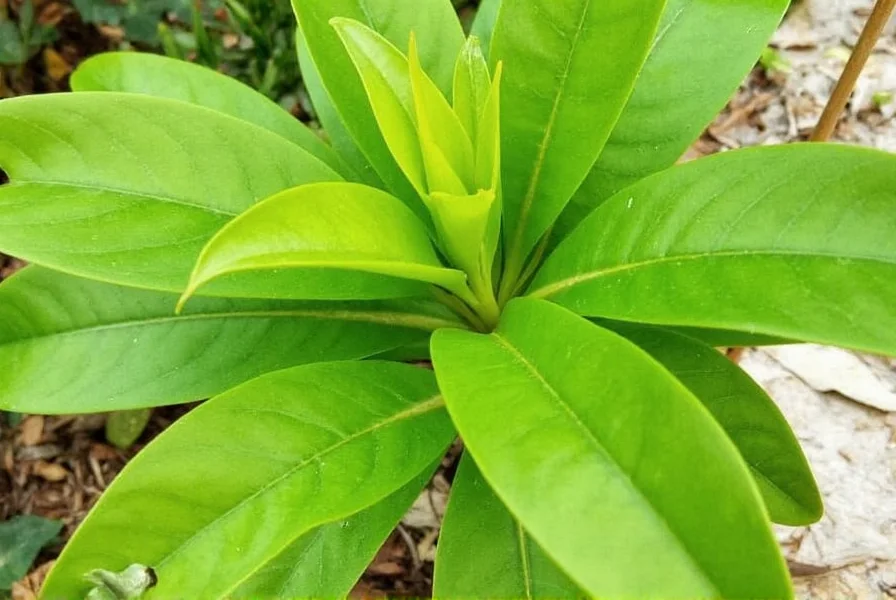While most people associate ginger with its knobby underground rhizome, the leafy green foliage of the ginger plant holds its own unique value. Are ginger leaves edible is one of the most common questions among home gardeners and culinary enthusiasts exploring the full potential of this versatile plant.
Understanding Ginger Plant Anatomy
The ginger plant (Zingiber officinale) produces two distinct edible components: the underground rhizome (commonly called ginger root) and the above-ground leafy shoots. Ginger leaves grow in pairs along thin, reed-like stalks that emerge from the rhizome. These leaves are long, narrow, and resemble grass or bamboo foliage, typically reaching 6-12 inches in length when mature.
| Feature | Ginger Leaves | Ginger Root (Rhizome) |
|---|---|---|
| Flavor Profile | Mild, citrusy, subtle ginger notes | Pungent, spicy, intense heat |
| Texture | Delicate, tender | Firm, fibrous |
| Primary Compounds | Moderate gingerols, higher volatile oils | High concentration of gingerols |
| Common Uses | Teas, garnishes, light cooking | Cooking, baking, medicinal preparations |
Culinary Applications of Ginger Leaves
When exploring how to use ginger leaves in cooking, consider their delicate nature. The leaves work best in applications where their subtle flavor can shine without being overwhelmed:
- Ginger leaf tea - Steep fresh or dried leaves for a soothing, aromatic beverage with mild digestive benefits
- Culinary garnish - Thinly slice leaves to add visual appeal and subtle flavor to soups, salads, and rice dishes
- Infused oils and vinegars - Add fresh leaves to create delicately flavored cooking bases
- Wrapping food - Use larger leaves to wrap small portions of fish or vegetables for steaming
Chefs in Southeast Asian cuisine have long incorporated young ginger shoots into dishes. In Thai cooking, see khing (young ginger shoots) appear in certain curry pastes and salads, providing a fresh ginger note without excessive heat.

Nutritional Profile and Health Benefits
Research on ginger leaf benefits reveals they contain valuable phytochemicals, though different from the rhizome. A 2019 study published in the Journal of Agricultural and Food Chemistry found ginger leaves contain:
- Moderate levels of gingerols (the compound responsible for ginger's heat)
- Higher concentrations of certain volatile oils compared to the rhizome
- Antioxidants including flavonoids and phenolic compounds
- Small amounts of vitamins A and C
While the nutritional value of ginger leaves differs from the root, they still offer potential health benefits. Preliminary research suggests ginger leaf extract may support digestive health and provide anti-inflammatory effects, though more studies are needed specifically on the leaves rather than the more commonly studied rhizome.
Growing and Harvesting Ginger Leaves
Those interested in growing ginger for leaves will find the plant relatively easy to cultivate in warm climates or as a container plant indoors. Ginger thrives in partial shade with rich, well-draining soil and consistent moisture.
Harvest ginger leaves when they reach 6-8 inches in length, preferably in the morning when moisture content is highest. Cut individual leaves rather than entire stalks to encourage continued growth. For the most tender leaves with the mildest flavor, harvest when the plant is young (3-4 months old).
Unlike the rhizome which requires the plant to be dug up, ginger leaves can be harvested throughout the growing season without damaging the plant. This makes them a sustainable crop for continuous harvesting.

Common Misconceptions About Ginger Foliage
Several myths persist about ginger leaves that deserve clarification:
- Misconception: Ginger leaves are toxic or unsafe to eat
Fact: Ginger leaves are completely edible and have been consumed safely for centuries in traditional Asian cuisines. - Misconception: Ginger leaves contain the same concentration of active compounds as the root
Fact: The phytochemical profile differs significantly, with leaves containing lower concentrations of gingerols but higher levels of certain volatile compounds. - Misconception: All ginger varieties produce edible leaves
Fact: While Zingiber officinale leaves are edible, some ornamental ginger species (like shell ginger) have leaves that aren't typically consumed.
Practical Tips for Using Ginger Leaves
When incorporating ginger foliage into your culinary repertoire, keep these practical considerations in mind:
- Use fresh leaves within 3-4 days for optimal flavor and texture
- Store unwashed leaves in a damp paper towel inside a plastic bag in the refrigerator
- Freeze leaves in ice cube trays with water for longer storage
- Pair with complementary flavors like lemon grass, kaffir lime, and coconut milk
- Use younger leaves for raw applications and more mature leaves for cooking
Understanding the unique properties of ginger leaves allows you to expand your culinary horizons beyond the familiar rhizome. Whether you're growing ginger at home or finding it at specialty markets, these delicate leaves offer a subtle way to incorporate ginger's distinctive flavor into dishes without overwhelming heat.
Frequently Asked Questions
Are ginger leaves edible?
Yes, ginger leaves from the Zingiber officinale plant are completely edible and safe for consumption. They have a milder, more delicate flavor compared to the ginger root, with subtle citrus notes and less heat. Many cultures, particularly in Southeast Asia, have incorporated ginger leaves into their cuisine for centuries.
What's the difference between ginger leaves and ginger root?
Ginger leaves have a milder, more delicate flavor with subtle citrus notes, while ginger root is pungent and spicy. The leaves contain lower concentrations of gingerols (the compound that gives ginger its heat) but higher levels of certain volatile oils. Texturally, leaves are tender and grass-like, while the root is firm and fibrous. Culinary applications differ significantly, with leaves working best in teas, garnishes, and light cooking.
How do you use ginger leaves in cooking?
Ginger leaves work best in applications that preserve their delicate flavor. Common uses include making ginger leaf tea, using as a garnish for soups and salads, creating infused oils and vinegars, and wrapping small portions of food for steaming. In Southeast Asian cuisine, young ginger shoots appear in certain curry pastes and salads. For raw applications, use younger leaves; more mature leaves can withstand light cooking.
Do ginger leaves have health benefits?
Yes, ginger leaves contain beneficial compounds including moderate levels of gingerols, higher concentrations of certain volatile oils compared to the rhizome, and antioxidants like flavonoids and phenolic compounds. Preliminary research suggests ginger leaf extract may support digestive health and provide anti-inflammatory effects, though more studies are needed specifically on the leaves rather than the more commonly studied rhizome.
Can you grow ginger for leaves indoors?
Yes, ginger grows well as a container plant indoors. Plant a fresh ginger rhizome in rich, well-draining potting mix with the growth buds facing up. Place in a location with bright, indirect light and maintain consistent moisture without waterlogging. Indoor ginger typically grows to 2-3 feet tall. Harvest leaves when they reach 6-8 inches in length, preferably in the morning. Indoor plants may grow more slowly than outdoor plants in tropical climates.











 浙公网安备
33010002000092号
浙公网安备
33010002000092号 浙B2-20120091-4
浙B2-20120091-4